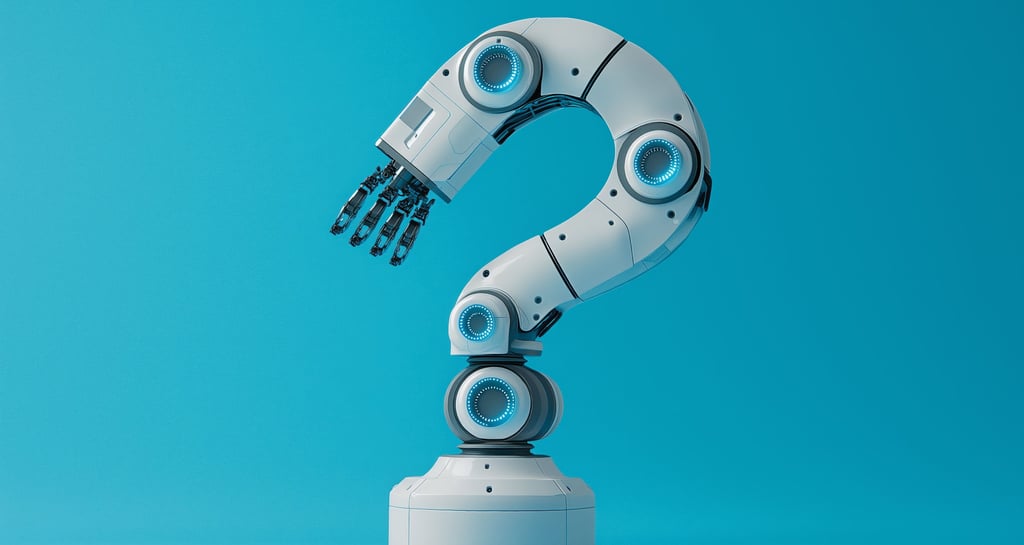10 Basic Interview Questions on Machine Learning
We have started a series of 10 questions periodically for each of the topics of machine learning !!! So train your brain in ML and AI.
Author1
10/3/20253 min read


1. What is Machine Learning?
Machine Learning (ML) is a subset of artificial intelligence that enables systems to learn patterns from data and make decisions or predictions without being explicitly programmed. It involves algorithms that improve their performance over time as they are exposed to more data. ML is used in various applications like recommendation systems, fraud detection, image recognition, and natural language processing. The core idea is to build models that generalize well to unseen data, allowing automation of tasks that traditionally required human intelligence.
2. Difference between AI, ML, and Deep Learning?
Artificial Intelligence (AI) is a broad field focused on creating systems that mimic human intelligence. Machine Learning (ML) is a subset of AI that uses statistical techniques to enable machines to learn from data. Deep Learning (DL) is a further subset of ML that uses neural networks with many layers to model complex patterns in large datasets. While AI includes rule-based systems and robotics, ML focuses on data-driven learning, and DL excels in tasks like image and speech recognition due to its ability to learn hierarchical representations.
3. Types of Machine Learning Algorithms?
Machine Learning algorithms are broadly categorized into three types: Supervised Learning, where models learn from labeled data (e.g., regression, classification); Unsupervised Learning, where models find patterns in unlabeled data (e.g., clustering, dimensionality reduction); and Reinforcement Learning, where agents learn by interacting with an environment and receiving feedback in the form of rewards or penalties. Each type serves different purposes, from predicting outcomes to discovering hidden structures or optimizing decision-making processes.
4. What is Supervised vs Unsupervised Learning?
Supervised learning involves training a model on labeled data, where the input features are associated with known output labels. The goal is to learn a mapping from inputs to outputs for tasks like classification or regression. Unsupervised learning, on the other hand, deals with unlabeled data. The model tries to uncover hidden patterns or groupings within the data, such as clustering similar items or reducing dimensionality. Supervised learning is used when outcomes are known, while unsupervised learning is exploratory.
5. What is Reinforcement Learning?
Reinforcement Learning (RL) is a type of machine learning where an agent learns to make decisions by interacting with an environment. The agent receives feedback in the form of rewards or penalties based on its actions and aims to maximize cumulative rewards over time. RL is used in areas like robotics, game playing, and autonomous systems. It differs from supervised learning in that it doesn’t require labeled data but learns from trial and error, often using techniques like Q-learning or policy gradients.
6. What is Overfitting and Underfitting?
Overfitting occurs when a model learns the training data too well, including noise and outliers, resulting in poor performance on new, unseen data. It has high accuracy on training data but low generalization. Underfitting happens when a model is too simple to capture the underlying patterns in the data, leading to poor performance on both training and test sets. Balancing model complexity and training data is key to avoiding both issues, often addressed through regularization, cross-validation, and model tuning.
7. Explain Bias-Variance Tradeoff
The bias-variance tradeoff is a fundamental concept in machine learning that describes the balance between two sources of error: bias and variance. Bias refers to errors due to overly simplistic assumptions in the model, leading to underfitting. Variance refers to errors due to model sensitivity to small fluctuations in the training data, leading to overfitting. A good model finds the right balance, minimizing total error. Techniques like cross-validation, regularization, and ensemble methods help manage this tradeoff effectively.
8. What is the Curse of Dimensionality?
The curse of dimensionality refers to the challenges that arise when working with high-dimensional data. As the number of features increases, the volume of the data space grows exponentially, making data sparse and models less effective. It affects distance-based algorithms like k-NN and clustering, as points become equidistant. It also increases computational cost and risk of overfitting. Dimensionality reduction techniques like PCA or feature selection are used to mitigate this issue and improve model performance.
9. What is Cross-Validation?
Cross-validation is a technique used to evaluate the performance of a machine learning model by partitioning the data into multiple subsets. The model is trained on some subsets and tested on the remaining ones. The most common method is k-fold cross-validation, where the data is split into k parts, and the model is trained and tested k times, each time using a different fold as the test set. This helps assess model generalization and reduces the risk of overfitting.
10. What is the Difference Between Training, Validation, and Test Sets?
In machine learning, data is typically split into three sets: Training set is used to train the model; Validation set is used to tune hyperparameters and evaluate model performance during training; Test set is used to assess the final model’s performance on unseen data. This separation ensures that the model generalizes well and prevents data leakage. The validation set helps in model selection, while the test set provides an unbiased evaluation of the final model.
